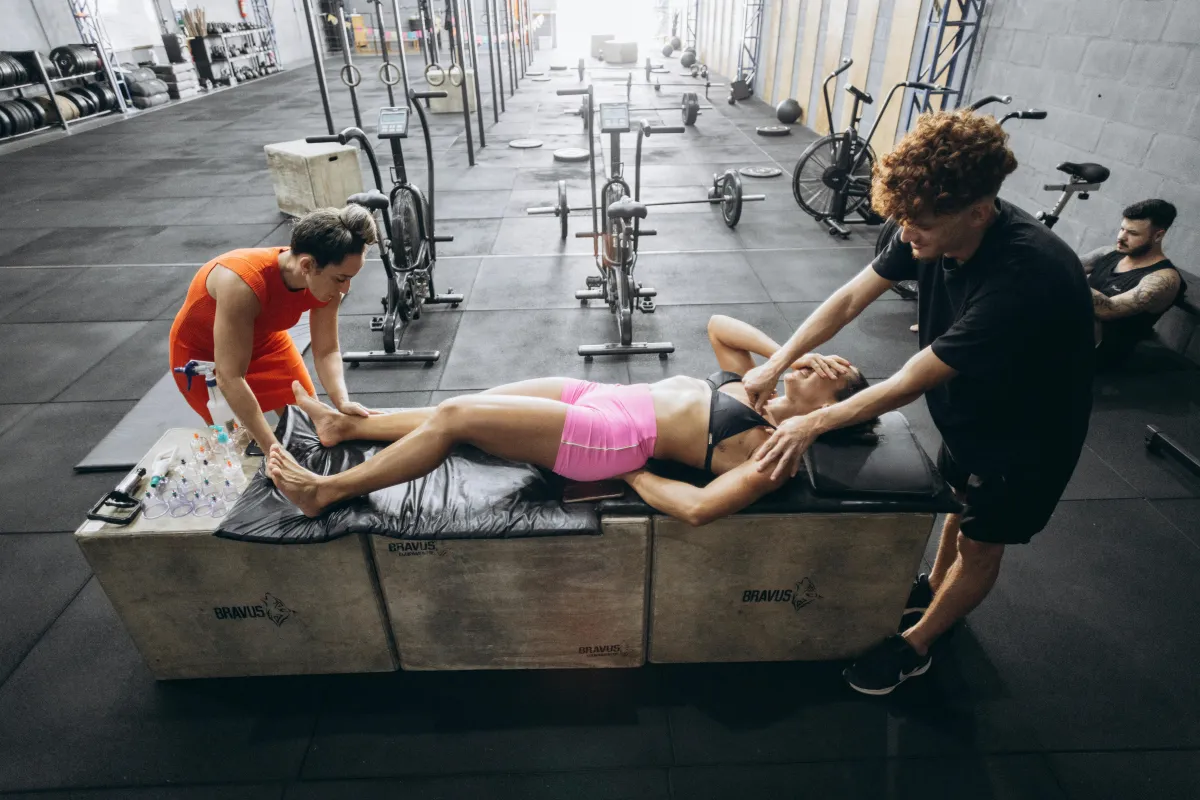
What to do when something hurts at the gym
If you have been training for a while, you have definitely been there. You start your warm up, and probably for no obvious reason something feels like it’s getting pinched in your shoulder or knee. Maybe your lower back is extra tight, and has a dull ache that is somewhat familiar. You now have an important decision to make.
Do you ignore it and continue with your workout as planned? Do you play it safe and leave the gym, maybe even rest for several days? Weeks?
The answer is the ever apt, and potentially frustrating 'it depends'. What you probably won't do, however, is whatever is going on in the picture above.
In this article, I will walk through my process for deciding what to do when something hurts at the gym.
Before we get into that, if this is a traumatic injury and/or there are red flags present (below), this framework does not apply. You should seek immediate medical evaluation in that case.
Red Flags (non-exhaustive list):
Colour and temperature changes (red, pale, blue) distal to site of injury (distal means further from body centre)
Unable to bear weight (~4 steps)
Progressive weakness and/or loss of sensation
Changes in bowel or bladder function (incontinence or difficulty)
Vision changes, balance/coordination issues
Difficulty swallowing or speaking
Worst headache of life

If none of these apply, and you do not have any significant medical issues that might cause your symptoms, the following process may apply.
If you did not warm up before the workout, go warm up thoroughly, then come back and try the exercise again. Sometimes you just need to get things warm and loosened up and little aches and pains or pinches go away. If you are unsure about what to do for a warmup, reach out and I will send you my Warm up Blueprint. My contact information is all over the website.
To summarize a proper warm up briefly; get warm (literally), do some stretching if you are lacking the mobility to achieve necessary body positions, then start doing the things you plan to train at a low but increasing intensity.
If the pain persists, but it is mild (<3/10) and not worsening you can modify slightly or continue the exercise and evaluate your longer-term response. If it is worse the following day or two, then whatever you did was likely too much. Modify it next time.
If the pain persists, and is moderate (~3-7/10) but improving, you may again choose to continue and keep evaluating over a longer period of time. Some conditions that cause substantial pain actually respond very well to exercise and will feel better gradually (tendinopathy for example).
If the pain is mild and worsening or moderate but not improving, it is time to modify your training. Try changing the tempo first, just controlling your positions better will often allow you to avoid whatever movement or position is causing the issue. High velocity movement also tends to be more aggravating for many issues, partly because the forces on the body are much higher, all else being equal.
If you are practicing gymnastics or weightlifting, you might have to change the workout more significantly, as you can’t really do a tempo muscle up or power clean. In that case, you will probably have to go straight to reducing load, and/or scaling back to a different movement. Better to scale for a day then to cause an issue that could last a whole lot longer than one day.
If the pain persists long term despite modifications, or worsens despite relative rest, it is time to go get checked out.

Here is an example to make this a little bit more concrete. If heavy shoulder to overhead is programmed in the WOD, and while warming up you feel shoulder pain you might go through this sequence:
Do some extra shoulder warmups like db raises, presses, or some work with a dowel and empty bar. After some extra warmup, if necessary, try push press if you were doing jerks or a strict press if you were doing push press. If that is still too painful, switch to a pair of dumbbells and try jerks, presses or some light, controlled strict presses.
In the gymnastics case, if ring muscle ups are programmed, you could try bar muscle ups first, then kipping chest to bar or pull ups, or ring pull ups or rows if needed.
The point is to continue training and developing your skills while reducing the stress on the body. Stress in this case being a general term that could mean several things - load, speed, volume or ROM.
You can work through some discomfort, and in fact will have to at some point if you want to really develop your fitness. But don’t take this to mean you should be in pain all the time, or ignore pain altogether. Pain is a warning. It is a signal to pay attention to. So pay attention, and take action appropriately.
If something isn’t working, do something different. That goes for pain and for performance. If you don’t know what to do, find someone that can tell you what to do, i.e. a healthcare provider or a coach.
Disclaimer: This article is meant for informational purposes only and does not constitute nor replace an assessment, diagnosis and treatment or the giving of medical advice. Note, no doctor patient relationship has been formed.
